Corsair Hydro Series H75 Sealed Water Cooler Review
Corsair H75 Benchmarking
In the benchmarks that I will be running, I used an Intel 4770k clocked at 3.5GHz with Turbo Boost and the low power state enabled. Turbo Boost allows the 4770k to hit up to 3.9GHz. To record temperatures, I used Core Temp, logged the temperatures while each program was active, and averaged all 4 cores. Since the fans are directly connected to the motherboard and controlled by the BIOS, I have left the default fan control settings in place, since most users will not be adjusting these settings anyway.
Benchmark wise, I will be using several synthetic and real-world benchmarks to perform normal, heavy, and extreme load. The benchmarks that Im going to use today include: Prime95, x264, 3DMark 2013 (Firestrike test only), Metro Last Light, and Sleeping Dogs. Prime 95 will peg all four cores and eight threads to 100% for 10 minutes, which will help us to understand exactly how hot this CPU can get with each cooler.
Ambient temperature during all testing was 74 degrees Fahrenheit.
140mm radiators are claimed to have better cooling performance over 120mm kits. NZXT claimed that their larger surface area radiator (140mm) could give their coolers the edge over 120mm coolers, like the Corsair H75, so I will have these numbers included for comparison. Lets see if the H75 has what it takes to keep up with the competition or even beat it!
Idle
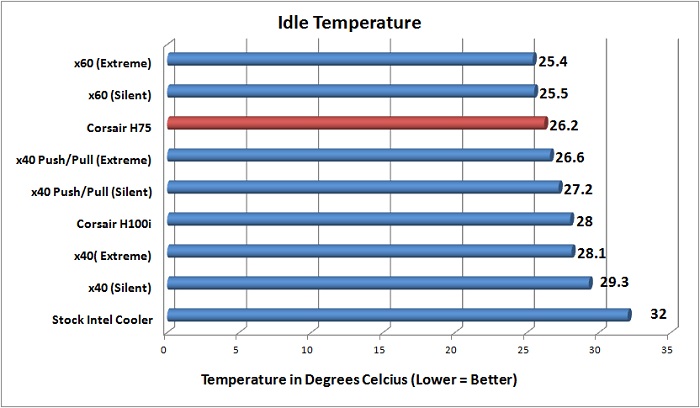
Prime95
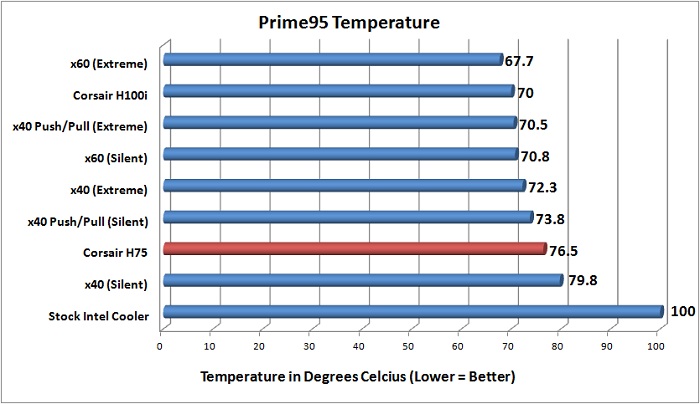
x264
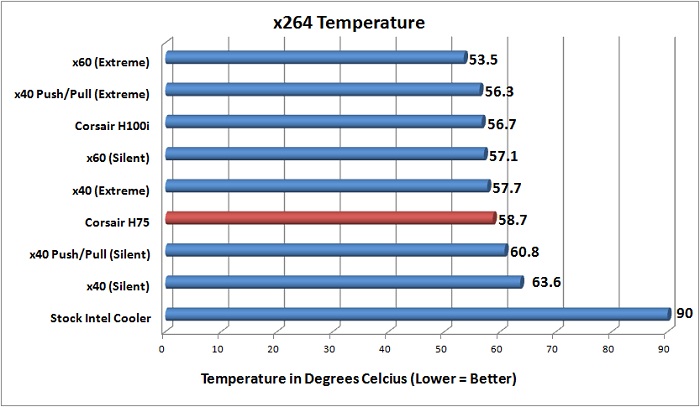
3D Mark 2013
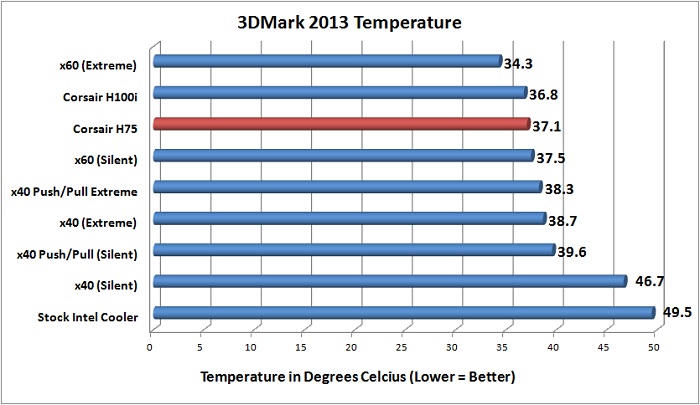
Metro Last Light
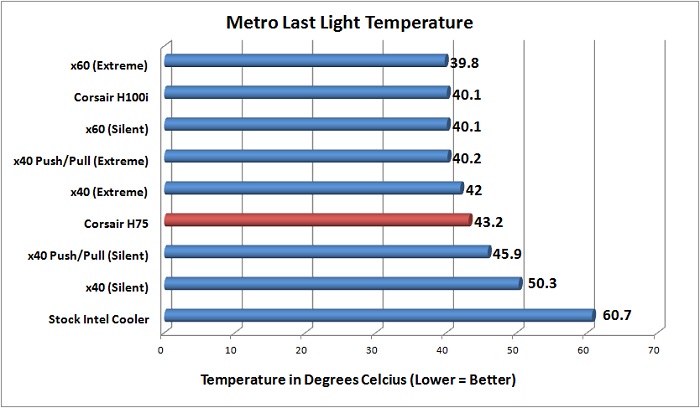
Sleeping Dogs
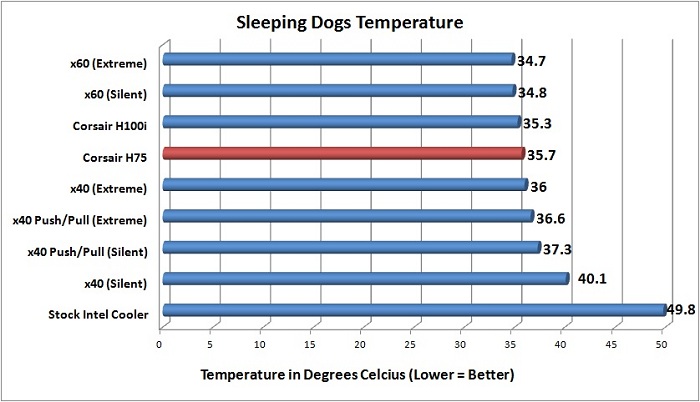
Overall Results: From the various graphs above, you can see that the H75 kept up with the bigger coolers in most tests, or even passed up others. In many tests, the H75 was right behind the H100i, which is great considering the H100i is twice the size.
